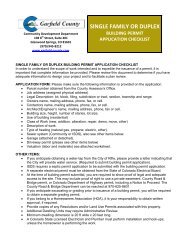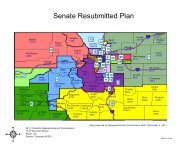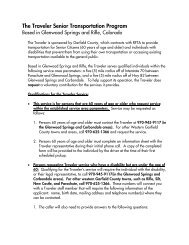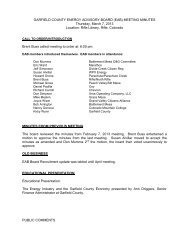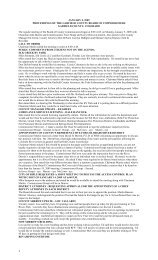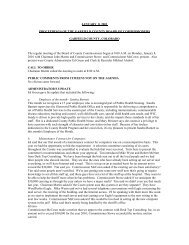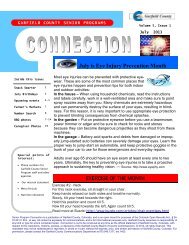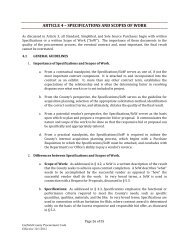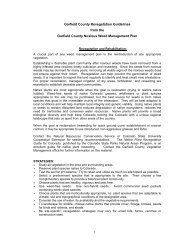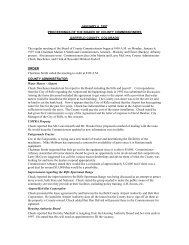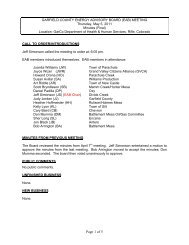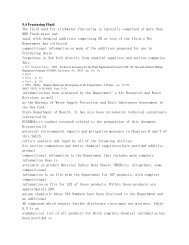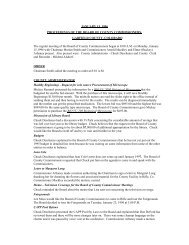Appendix D: Human Health Risk Assessment - Garfield County ...
Appendix D: Human Health Risk Assessment - Garfield County ...
Appendix D: Human Health Risk Assessment - Garfield County ...
Create successful ePaper yourself
Turn your PDF publications into a flip-book with our unique Google optimized e-Paper software.
<strong>Appendix</strong> D Screening Level <strong>Human</strong> <strong>Health</strong> <strong>Risk</strong> <strong>Assessment</strong> February 2011<br />
Battlement Mesa, Colorado <strong>Health</strong> Impact <strong>Assessment</strong> Colorado School of Public <strong>Health</strong><br />
Antero’s 2010 sampling. In addition, five COPCs identified from the Bell-Melton Ranch<br />
data set that were not measured in the 2008 air toxics study were identified as COPCs. 74<br />
contaminants were selected as COPCs. The following 15 contaminants were retained as<br />
COPCs because the maximum detected concentration exceeded 1/10 the EPA RSL or<br />
they were identified as COPCs in the Bell-Melton Ranch data set.<br />
• 1,2,3-Trimethylbenzene<br />
• 1,2,4-Trimethylbenzene<br />
• 1,3,5-Trimethylbenzene<br />
• 1,3-Butadiene<br />
• Benzene<br />
• Ethylbenzene<br />
• m&p-Xylene<br />
• n-Hexane<br />
• n-Nonane<br />
• n-Pentane<br />
• Acetaldehyde<br />
• Formaldehyde<br />
• 1,4-Dichlorobenzene<br />
• Methylene chloride<br />
• 2-Hexanone<br />
There was no EPA RSL for the remaining 59 COPCs, which were retained because their<br />
detection frequency was 5 percent or greater.<br />
Two possible EPCs were evaluated. The first EPCs were determined as described in<br />
Section 2.5.1 and are summarized in Table 2-11. The maximum observed concentration<br />
was assigned as the second EPC because concentrations of COPCs in ambient air have<br />
been measured during completion activities involving up to 3 wells and more wells may<br />
be completed at one time during Antero’s proposed project. The maximum detected<br />
concentrations were observed in the sample collected downwind of and approximately<br />
200 feet from the center of an Antero well pad during flow back operations. In addition,<br />
samples were collected over a 24-hour interval which may have diluted out peak<br />
emissions during flow back operations. The two EPCs (the maximum detected<br />
concentration and the 95%UCL) provides a range for evaluation of risk.<br />
2.5.4 Chemicals of Potential Concern Grab Samples<br />
Table 2-7 summarizes the selection of COPCs from grab samples collected when<br />
residents noticed odors they attributed to natural gas operations during the 2005 -2007<br />
ambient air monitoring study and from grab samples collected by Antero in August 2010.<br />
The following 11 chemicals were selected as COPCs because the maximum detected<br />
concentration exceeded 1/10 the EPA RSL or they had a detection frequency of greater<br />
than 5 percent and no EPA RSL was available<br />
<strong>Appendix</strong> D page 17



